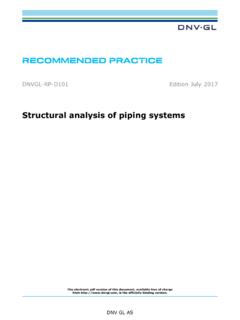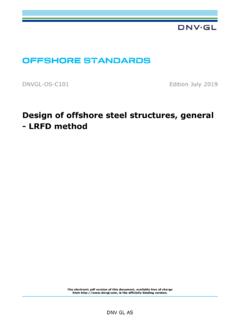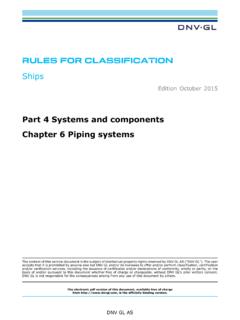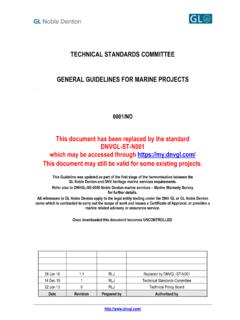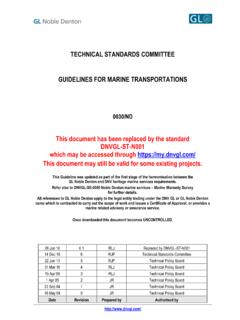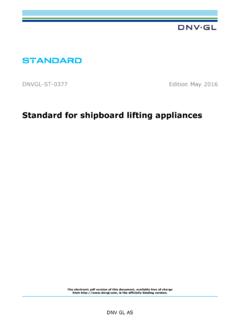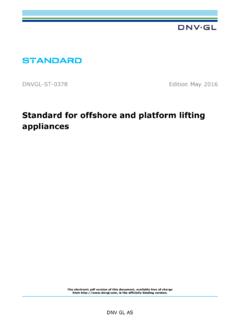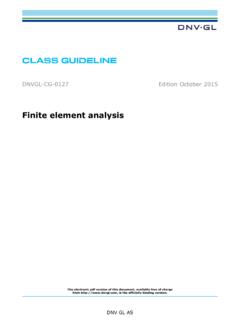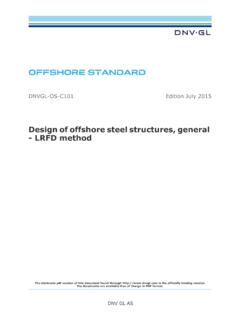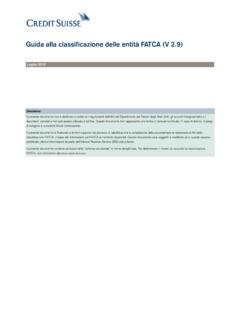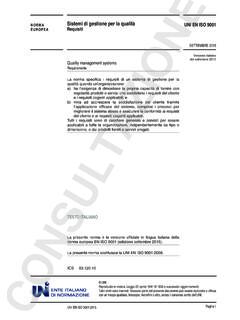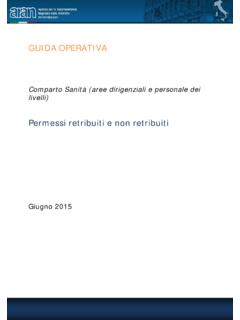Transcription of DNVGL-ST-0119 Floating wind turbine structures
1 The electronic pdf version of this document, available free of chargefrom , is the officially binding GL ASSTANDARDDNVGL-ST-0119 Edition July 2018 Floating wind turbine structuresFOREWORDDNV GL standards contain requirements, principles and acceptance criteria for objects, personnel,organisations and/or operations. DNV GL AS July 2018 Any comments may be sent by e-mail to service document has been prepared based on available knowledge, technology and/or information at the time of issuance of thisdocument. The use of this document by others than DNV GL is at the user's sole risk.
2 DNV GL does not accept any liability or responsibilityfor loss or damages resulting from any use of this document. Changes - currentStandard DNVGL-ST-0119 . Edition July 2018 Page 3 Floating wind turbine structuresDNV GL ASCHANGES - CURRENTThis document supersedes the June 2013 edition of in this document are highlighted in red colour. However, if the changes involve a whole chapter,section or subsection, normally only the title will be in red July 2018 TopicReferenceDescriptionNew titleThe previous title of DNV-OS-J103 hasbeen of terminologyWhole documentThe term ship impact has beenreplaced by boat impact to align withDNVGL-ST-0437, DNVGL-ST-0126 andIEC section has been regarding follow up ofmanufacturing by third party surveyorhas been number of terms, symbols, Greekcharacters and abbreviations havebeen note on tower revised[ ]
3 The second paragraph in the guidancenote has been of DNV GL referencedocuments[ ], whole documentNew DNV GL standards andrecommended practices have replacedDNV floater and degree of freedom(DOF) figures included[ ]The text describing typical floatersand boundary conditions has beenimproved to clarify the six degreesof freedom of a Floating turbine , andtwo new figures have been includedreplacing the previous in from safety class toconsequence class[ ]Low safety class has been removedand the other two safety classes havebeen replaced by consequence classes,adopting definitions from DNVGL-OS-E301, to avoid confusion with thesafety class of the wind of accidental limit state(ALS)
4 Revised[ ]The definition of ALS has been revised;presence of nonlinear environmentalconditions has been replaced bypresence of abnormal environmentalconditions. Changes - currentStandard DNVGL-ST-0119 . Edition July 2018 Page 4 Floating wind turbine structuresDNV GL ASTopicReferenceDescriptionRequirements on model test andsoftware validation revised[ ], [ ]Requirements for model tests havebeen revised to only require modeltests for novel designs. A subsection[ ] regarding validation ofsoftware has been classes[ ]The subsection has been restructuredto clarify the environmental text has been revised andadditional items added in subsection[ ].
5 Wind gust revised[ ]The guidance note on gust modelhas been expanded by an expressionfor reference wind speed thatcharacterizes the intensity of the additon, a guidance note has beenadded in [ ] and [ ],and subsection [ ] has spectrum[ ]An alternative regarding combinationof JONSWAP spectrums has water specification[ ]A specification related to deep waterhas been seismicity text[ ]The text about seismicity has beenexpanded, and reference to DNVGL-ST-0437 and ISO 19901-2 period of accidental loadmodified and added paragraphregarding current[ ]The title of the subsection has have been updatedThe return period for accidental loadsthe in guidance note in subsection[ ] has been changed from 1000to 500 years, see also changes insection [ ] and [ ]The subsection [ ] on currenthas been return period for accidental loadsin the guidance note in [ ]
6 Hasbeen changed from 1000 to 500 years,see also changes in [ ] and[ ]. [ ] regarding currenthas been for marine growth added[ ]A requirement related to assessmentof site specific conditions andclarification regarding structuralcomponents have been added. Changes - currentStandard DNVGL-ST-0119 . Edition July 2018 Page 5 Floating wind turbine structuresDNV GL ASTopicReferenceDescriptionStorm conditions added[ ]Highlighted that storm conditionswith high waves can cause governingextreme effect added[ ]Highlighted that coupling effects maybe categories added[ ]Load categories added andrestructuring of loads[ ]The values for load categoryenvironmental loads in ALS in Table4-1 and Table 4-2 have been revisedto abnormal.
7 A load category forprestressing (P) has been impact loads[ ]The text about ship impact loads hasbeen expanded by text carried overfrom the replaced DNV-OS-J101 Thetext about ship impact loads has condition[ ]The paragraph stating that the survivalcondition needs shorter survival timehas been specific design load cases(DLC) included[ ]Floater-specific DLCs have requirement for using the applicablecurrent model in the DLCs given inDNVGL-ST-0437 has been period for accidental loadsrevised[ ], [ ], [ ]The return period for accidental loadshas been reduced to 500 guidance for variance ofdraught[ ]Guidance added regarding effectsinfluencing the operational for wave slamming added[ ]A number of additional effects thatmay cause wave slamming have states clarified and load categoryP added[ ]
8 Example of ALS for intact and damagestructure has been of the ultimate limit state(ULS) for abnormal loads has beenrevised and reference to DNVGL-ST-0437 added. Two load factorsare given (differentiating betweenconsequence class 1 and 2).For ULS load factor set (b), loadfactors for the situation where thereis a risk for excessive dynamicexcitations have been load category P has been added,applicable for concrete structures . Changes - currentStandard DNVGL-ST-0119 . Edition July 2018 Page 6 Floating wind turbine structuresDNV GL ASTopicReferenceDescriptionRequirement related to structural crossjoints moved[ ], [ ]A requirement related to cross jointsand plate material has been moved to[ ].
9 Guidance note on ASTM bolts deleted[ ]A guidance note related to the ASTM standard for bolts has been categorization added[ ]New subsection on structuralcategorization has been note on design of fibre ropesdeleted[ ]A guidance note related to design offibre ropes has been deleted as theinformation is available in note on decommissioningadded[ ]A guidance note related todecommissioning and methods forremoval has been related to concretestructures moved[ ], [ ]Requirements related to concretestructures have been moved from[ ] to a new subsection forconcrete structures , [ ].
10 Guidance note on optimum floaterdesign deleted[ ]Guidance note related to optimumfloater design has been deleted as itdid not give useful related to Mathieuinstability (MI) and vortex inducedmotions (VIM)[ ]MI and VIM shall be considered note revised regardingweather criterion for installation ofcomponents[ ]Guidance note on the use of sameweather criterion for installation ofdifferent components in a wind subsections on scantlings[ ], [ ]New subsections on scantlings havebeen SN-curve table[ ]Table 7-4 with criteria for selection ofSN-curves has been design fatigue factors (DFFs)

